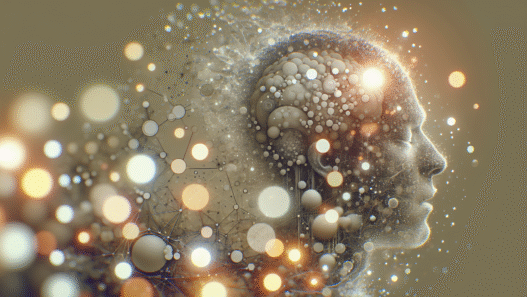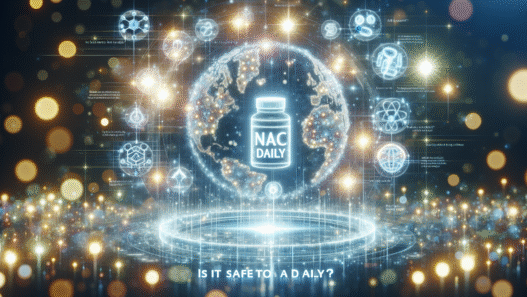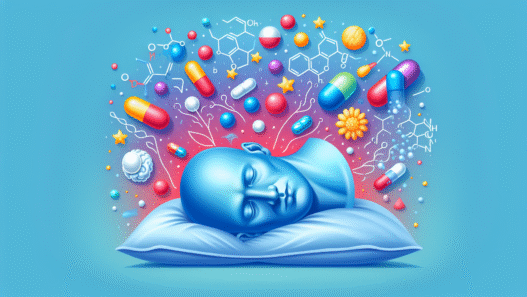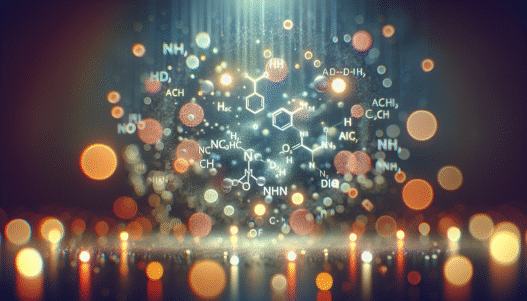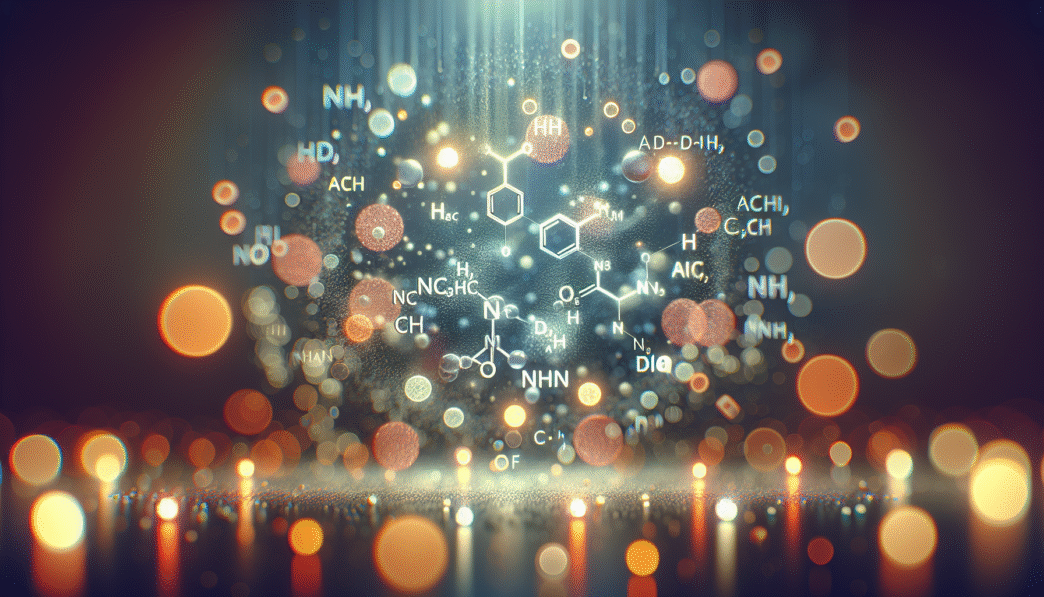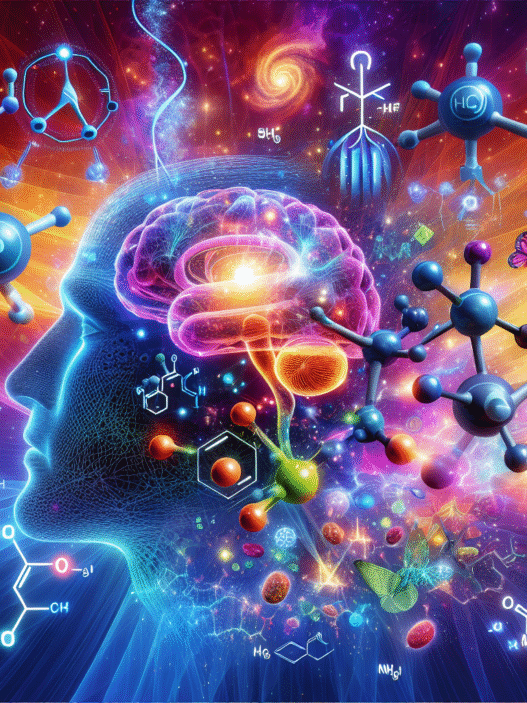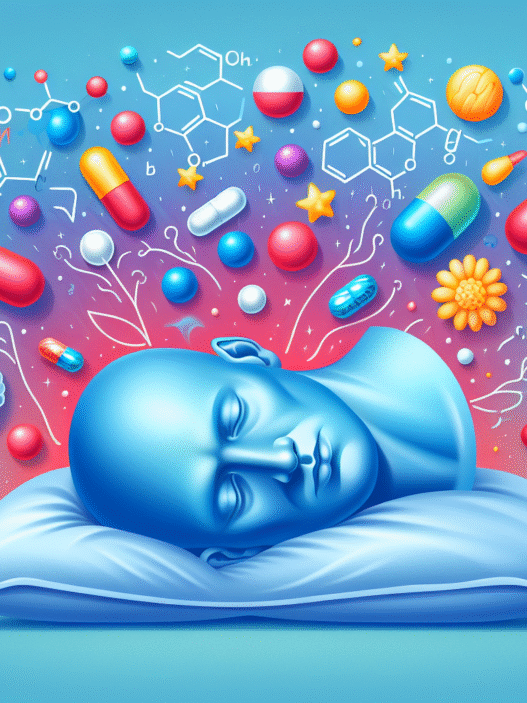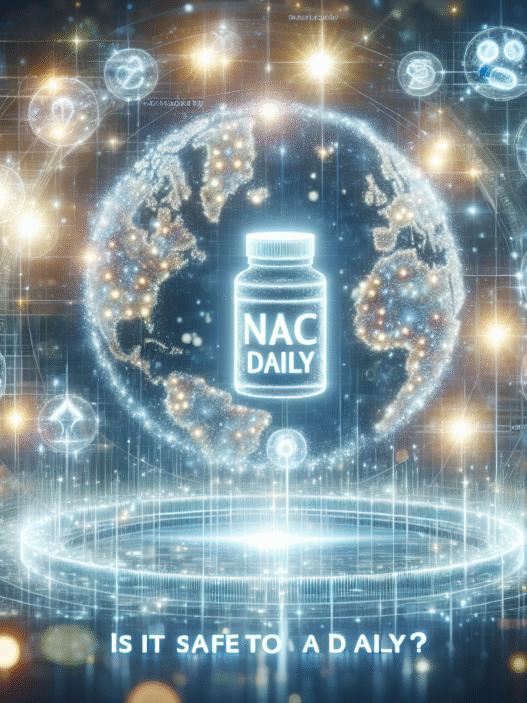Niacin and N-Acetyl Cysteine (NAC) Basics
Understanding health supplements is crucial for those interested in liver health, detoxification, and longevity. One common question arises: is NAC the same as niacin? The answer is no; they are distinct compounds with different functions in the body.
Differentiating Niacin and NAC
Niacin, also known as vitamin B3, is essential for generating energy and maintaining healthy skin and digestive systems. It plays a critical role in converting food into energy, and is vital for the nervous system. In contrast, N-acetylcysteine (NAC) is an amino acid derivative known primarily for its role in antioxidant production. Unlike niacin, which is widely recognized as a vitamin, NAC is valued for its ability to support detoxification processes and stimulate the production of glutathione, one of the body’s most important antioxidants.
| Property | Niacin (Vitamin B3) | N-Acetyl Cysteine (NAC) |
|---|---|---|
| Primary Role | Energy metabolism | Antioxidant production |
| Use | Vitamin supplement | Detoxification aid |
| Antioxidant Function | Limited | High |
| Detoxification Support | No | Yes |
NAC is vital for neutralizing free radicals, which can reduce the risk of chronic conditions like cardiovascular disease. Additionally, it helps regulate glutamate levels in the brain, which is essential for optimal brain function.
Importance of NAC for Antioxidant Production
NAC is crucial for synthesizing and replenishing glutathione by working alongside other amino acids like glutamine and glycine. Glutathione is integral to detoxification processes and acts as a powerful antioxidant, neutralizing harmful free radicals in the body. This function reduces oxidative stress and inflammation, which are linked to various health issues.
NAC’s role in antioxidant production makes it particularly beneficial for people concerned about their liver health. It is commonly used to prevent or lessen kidney and liver damage caused by environmental toxins. By enhancing the body’s natural antioxidant defenses, NAC supports overall health and longevity.
For those interested in the benefits of NAC, detailed information can be found on its uses and benefits. Ensure you also consider potential interactions and risks associated with NAC by checking resources on negative side effects, and its effects on liver health, including how it can help detoxify the body.
Niacin: Benefits and Risks
Niacin, also recognized as Vitamin B3, offers various health benefits but comes with associated risks, particularly when consumed in excess. This section will outline the key aspects of niacin, highlighting its role as a vitamin source, its impact on cholesterol management, and the potential health risks linked with high intake.
Niacin as a Vitamin B3 Source
Niacin is primarily sourced from foods such as red meat, poultry, fish, brown rice, nuts, seeds, legumes, and bananas. Many fortified cereals and breads are also rich in niacin (WebMD). This vitamin plays a crucial role in the body, supporting metabolism and contributing to the health of the skin, nerves, and digestive system.
| Food Source | Niacin Content (mg) |
|---|---|
| Chicken Breast (cooked, 3.5 oz) | 11.4 |
| Tuna (cooked, 3.5 oz) | 11.3 |
| Salmon (cooked, 3.5 oz) | 8.5 |
| Brown Rice (1 cup, cooked) | 2.3 |
| Peanuts (1 oz) | 4.2 |
Cholesterol Control with Niacin
Niacin has established credibility as a treatment for cholesterol management. It can boost levels of beneficial HDL cholesterol, lower triglycerides, and modestly reduce levels of bad LDL cholesterol. Healthcare providers may prescribe high doses of niacin in conjunction with statins like atorvastatin or simvastatin for optimal cholesterol control.
| Cholesterol Component | Effect of Niacin |
|---|---|
| HDL (Good) | Increases |
| LDL (Bad) | Decreases |
| Triglycerides | Decreases |
Potential Health Risks of Excessive Niacin Intake
While niacin can be beneficial when taken appropriately, excessive intake poses significant health risks. High doses of prescription niacin, ranging from 2,000 to 6,000 mg daily, can lead to serious side effects. Individuals with liver conditions, peptic ulcers, or hypotension should avoid high amounts as they may experience liver damage. Caution should also be exercised in people with allergies, gallbladder issues, thyroid dysfunction, diabetes, and gout due to possible adverse effects.
It’s crucial for anyone considering niacin supplementation to consult with a healthcare professional to discuss potential risks and proper dosage. For more information about the uses of NAC, visit what is nac n-acetyl cysteine used for?.
NAC: Uses and Benefits
N-Acetyl Cysteine (NAC) is gaining recognition for its diverse health benefits. It is particularly valuable for its role in antioxidant production, mental health support, and respiratory health.
Role of NAC in Glutathione Production
NAC plays a crucial role in the synthesis of glutathione, an essential antioxidant that protects the body from oxidative stress and cell damage. By enhancing glutathione levels, NAC helps the body combat free radicals, which can contribute to various health conditions such as heart disease, diabetes, and infertility (WebMD).
| Benefit | Description |
|---|---|
| Antioxidant Production | Increases glutathione levels to fight free radicals |
| Detoxification | Aids in detoxifying the liver and kidneys, reducing damage from environmental toxins (Healthline) |
Mental Health Benefits of NAC
NAC has garnered attention for its potential positive effects on mental health. It helps regulate glutamate levels in the brain, a neurotransmitter that is vital for cognitive function. Excess glutamate can lead to harmful effects associated with various mental health disorders, including bipolar disorder, schizophrenia, and OCD.
| Mental Health Condition | Potential Impact of NAC |
|---|---|
| Bipolar Disorder | May help regulate mood |
| Schizophrenia | Possible reduction in symptoms |
| Obsessive-Compulsive Disorder | May alleviate symptoms |
Respiratory and Lung Health Support with NAC
NAC is effective in supporting respiratory health, primarily due to its antioxidant and expectorant properties. It works by loosening mucus in the airways, making it easier to expel, which can relieve symptoms associated with respiratory conditions such as asthma and chronic obstructive pulmonary disease (COPD).
| Respiratory Health Benefit | Description |
|---|---|
| Mucus Reduction | Acts as an expectorant to clear airways |
| Antioxidant Action | Reduces oxidative stress in lung tissues |
The comprehensive benefits of NAC highlight its importance in various health contexts, especially for those seeking to improve liver function, mental health, and respiratory capabilities. For more information on how to incorporate NAC into a wellness routine, check out our article on what is nac n-acetyl cysteine used for?.
NAC: Beyond Antioxidant Protection
N-Acetyl Cysteine (NAC) offers various health benefits beyond its well-known role as an antioxidant. Specifically, it can enhance brain health, improve fertility, and may offer potential skin health advantages and cancer treatment options.
Brain Health Benefits of NAC
NAC plays a crucial role in replenishing glutathione, a powerful antioxidant that protects brain cells. Research suggests that NAC can help regulate brain glutamate levels, which may boost overall cognitive function. It has been studied for its potential to slow the loss of thinking ability in individuals with Alzheimer’s disease and to enhance dopamine function in those with Parkinson’s disease (Healthline). The positive effects on brain health make NAC a compelling option for those looking to improve cognitive longevity.
Fertility Improvement with NAC
NAC may also be beneficial for both male and female fertility. For men, it has been shown to reduce oxidative stress on reproductive cells and could positively affect conditions like varicocele. In women, NAC may assist those dealing with conditions such as polycystic ovary syndrome (PCOS) by helping to induce or enhance the ovulation cycle. As fertility challenges are common, NAC presents itself as a potential aide in this realm.
| Gender | Potential Benefits of NAC on Fertility |
|---|---|
| Men | Reduces oxidative stress; may improve conditions like varicocele |
| Women | Aids ovulation cycles, especially in PCOS |
Potential Skin Health and Cancer Treatment Benefits
NAC shows promise in the realm of skin health and cancer treatment. While further research is needed to fully confirm these benefits, preliminary findings indicate that NAC may help mitigate skin picking disorders and could lower heart disease risks when combined with green tea. Additionally, its antioxidant properties could play a role in cancer treatment, with studies suggesting NAC’s potential to assist in combating certain types of cancer.
As a versatile compound, NAC supports various wellness aspects, underscoring its importance for those interested in health, detoxification, and longevity. This nutrient can have significant implications across multiple areas of health, positioning it as a beneficial supplement. For more insights into NAC’s uses, check out our article on what is nac n-acetyl cysteine used for?.
Niacin vs. NAC in NAD+ Metabolism
Understanding how Niacin and N-Acetyl Cysteine (NAC) contribute to NAD+ metabolism can help health seekers appreciate their roles in cellular processes and overall health.
NAD+ and NAD(P)(H) Pool
NAD+ (Nicotinamide Adenine Dinucleotide) and its reduced form NADH, along with its phosphorylated counterpart NADP+, play essential roles in metabolic processes. Together, they are referred to as the NAD(P)(H) pool. Niacin (also known as nicotinic acid, NA) and niacinamide (nicotinamide, Nam) serve as crucial biosynthetic precursors to NAD+ and its derivatives. They help generate energy and manage cellular functions throughout the body PMC.
The following table summarizes the components of the NAD(P)(H) pool:
| Component | Description |
|---|---|
| NAD+ | Oxidized form, plays a role in energy production |
| NADH | Reduced form, involved in redox reactions |
| NADP+ | Phosphorylated form, used in anabolic reactions |
| NADPH | Reduced form of NADP+, supports biosynthesis and antioxidant functions |
Biosynthesis Pathways of NAD+
The biosynthesis of NAD+ involves several pathways and precursors. Niacin and nicotinamide can be derived from dietary sources or synthesized from the amino acid tryptophan through various metabolic routes.
| Pathway | Precursors | End Products |
|---|---|---|
| Dietary | Niacin, Nicotinamide | NAD+ |
| Tryptophan Metabolism | Kynurenine, Quinolate | Nicotinic Acid Mononucleotide (NAMN), Nicotinamide Mononucleotide (NMN) |
These pathways highlight the body’s ability to synthesize necessary precursors, ensuring adequate NAD+ levels for cellular functions.
Intracellular Generation of Niacin and Nicotinamide
Within the body, niacin and nicotinamide are generated intracellularly from dietary vitamin B3 or tryptophan. The significant biosynthetic precursors to NAD+ include kynurenine, 3-hydroxykynurenine, 3-hydroxyanthranilate, and quinolinate. Each of these pathways leads to the generation of nicotinic acid mononucleotide (NAMN) and nicotinamide mononucleotide (NMN), demonstrating the interconnected nature of these metabolic processes PMC.
The metabolic processes involved in NAD+ synthesis are essential for maintaining energy levels and supporting various cellular functions. Understanding these pathways sheds light on the importance of both niacin and NAC in promoting overall health and longevity, particularly in the context of liver health and detoxification. For more information on the uses and benefits of NAC, refer to our article on what is NAC N-Acetyl Cysteine used for?.
Niacin and NAC: Metabolic Pathways
Understanding the metabolic pathways involving Niacin and N-Acetyl Cysteine (NAC) is essential for health seekers aiming to optimize their health and longevity.
Tracking NAD+ Metabolism
Niacin (NA) and nicotinamide (Nam) are integral components in the biosynthesis and metabolism of NAD+ (Nicotinamide Adenine Dinucleotide). These compounds are generated intracellularly from dietary vitamin B3 or tryptophan. Key biosynthetic precursors for NAD+ include kynurenine, 3-hydroxykinurenine, 3-hydroxyanthranilate, and quinolinate, which eventually lead to nicotinic acid mononucleotide (NAMN) and nicotinamide mononucleotide (NMN) through various pathways.
The NAD(P)(H) pool is vital for numerous biological processes, including energy production and antioxidant defense. A detailed look at these pathways highlights the significant role vitamins play in managing NAD+ metabolism, requiring several B-vitamins such as riboflavin, pyridoxine, and thiamine (PMC).
Importance of Isotopically Labeled Forms
Isotopically labeled forms of nicotinamide, nicotinic acid, and tryptophan are commercially available, providing powerful tools for tracking and quantifying metabolic pathways related to NAD+ metabolism. By utilizing stable isotope labeling, researchers can study the metabolic behavior of these compounds in various biological systems. This technique enables a deeper understanding of metabolic fluxes and biodistribution processes in cell-based assays and animal models, offering insights into how NAD+ precursors function within the body (PMC).
Synthetic Routes for NAD+ Precursors
Various synthetic and chemoenzymatic routes have been developed to create isotopically labeled NAD+ precursors. These methods facilitate the production of nitrogen isotopes necessary for tracing specific metabolic pathways. The availability of these precursors aids in elucidating how different NAD+ sources contribute to essential physiological outcomes, particularly for those concerned about liver health, detoxification, and overall longevity.
By employing these synthetic routes, researchers can better grasp how dietary factors and supplements, like NAC and niacin, influence the intricate web of metabolic pathways related to NAD+ synthesis, ultimately affecting health status and longevity (PMC).



